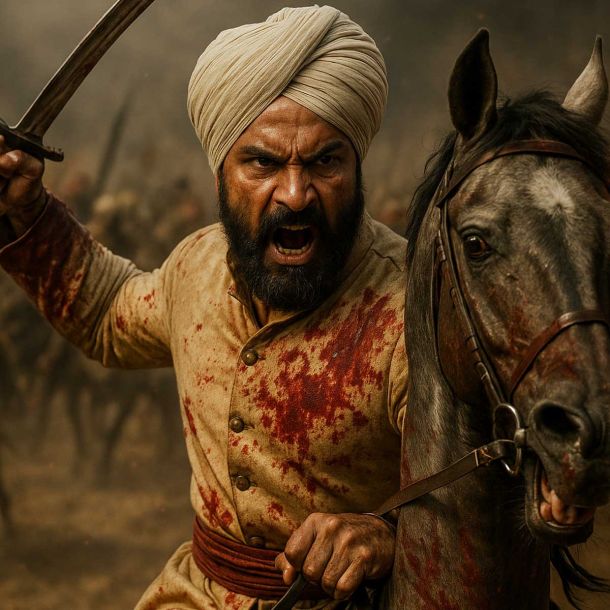Sanatan Articles
Satyaagrah
Written on
Satyaagrah
Written on
Satyaagrah
Written on
Satyaagrah
Written on
Satyaagrah
Written on
JOIN SATYAAGRAH SOCIAL MEDIA
Genghis Khan's decision to not invade Bharat (land of fabulous wealth) has perplexed historians for centuries: Mystery revealed

799 years ago, in the year 1221, the great Mongol conqueror Genghis Khan1 stood victorious at the western bank of the Indus river with 50,000 soldiers, having just defeated Jalal-ad-Din2, the Shah of Khwarazm. Jalal-ad-Din’s army was completely destroyed in this battle3, which took place near the town of Kalabagh in Punjab.
Across the river lay the richest country in the history of the world: Bharat – A land of fabulous wealth; A land that accounted for over a third of the entire world’s GDP4; A land that would-be invaders fantasized about; A land that was groaning under foreign, Islamic occupation: Northern Bharat was ruled at the time by Shams ud-Din Iltutmish5, the third sultan of the Turkic Mamluk dynasty6, which was founded by Qutb al-Din Aibak in 1206.
Background
A few months before this battle, Genghis Khan had conquered7 Jalal-ad-Din’s vast Empire of Khwarazm8. Khwarazm was a Turkic Empire that ruled Iran. It consisted of Iran, Turkmenistan, Uzbekistan, parts of Kazakhstan, Tajikistan, Kyrgyzstan, and much of north-western Bharat, which is today’s Afghanistan.
Genghis Khan sacked and destroyed the great cities of Samarkand, Bukhara, Nishapur, Otrar, and Gurganj. He laid the Islamic heartland to waste. His army burned Islamic libraries and replaced mosques with Buddhist temples9. It devastated Iran and Afghanistan. And he pursued Jalal-ad-Din all the way from Uzbekistan into western Bharat.
Jalal-ad-Din had the same Turkic Mamluk10 ancestry as the invaders who ruled northern Bharat at the time, which is why he hoped that Iltutmish would grant him asylum in Bharat. He was a foreign Turkic invader who ruled Iran, the same way that Iltutmish was a foreign Turkic invader who ruled Bharat. The Iranian people do not look upon Jalal-ad-Din as one of their own, the same way the people of Bharat do not see Iltutmish as one of their own. Or Babur, Akbar, Aurangzeb, or Bahadur Shah Zafar.
So, being granted refuge in Bharat was Jalal-ad Din’s only hope.
He had chosen an excellent defensive position for the battle with the Mongols. It was flanked by high mountains on two sides and the great river on the third side. He had prayed fervently for deliverance, but the miracle never came. His army proved no match for the polytheistic warriors who came from 2000 miles away. It was swept away and slaughtered to the last man.
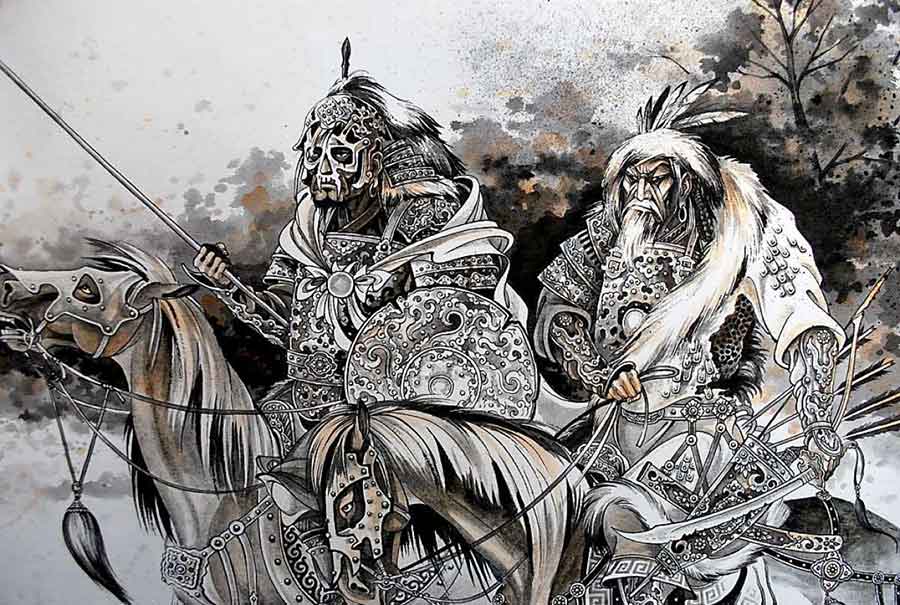 Mongolian art based on Genghis Khan |
Genghis Khan Turns Back
Genghis Khan watched as Jalal-ad-Din frantically rode his horse across the Indus in a desperate bid to escape. All he had to do was cross the river. If he crossed the river, not only would he be able to kill his enemy, he would also have the opportunity to smash the Delhi sultanate and conquer the world’s richest country.
He had at his command the Mongol army, which he had personally forged into the greatest and deadliest fighting force in the world. It had already done the unthinkable by conquering China11 and capturing Beijing12. It had conquered the Qara Khitai Empire13 in Central Asia. It had conquered the enormous Empire of Khwarazm. This was an unstoppable, all-conquering war machine. The Delhi Sultanate was no match for it.
Genghis Khan is the greatest conqueror in recorded history. He did not lose a single military campaign in his life. He could simply have walked into Bharat, made short work of the Delhi Sultanate, and become the wealthiest man in the world.
Instead, to make a long story short, he turned back. He spurned the heaven-sent, once-in-a-lifetime chance to conquer Bharat. He chose to retreat all the way back to Mongolia. He did leave behind administrators and soldiers to govern Afghanistan. These were the ancestors of today’s Hazaras14.
Theories: Not Quite Right
His decision to not invade Bharat has perplexed historians for centuries. It remains an enduring mystery to this day. There are several theories about why he made that decision.
Biographies of one of his Chinese advisers15 claim that a talking unicorn16 appeared to Genghis at the border of Uzbekistan and Bharat17 (present-day Afghanistan), and instructed him to return early from Bharat.
Some historians, such as the Persian Juzjani18, believe that Bharat’s hot climate was too harsh for the Mongol army16, which was accustomed to fighting in cold weather. This problem with this theory is that the Mamluks, who established the Delhi Sultanate in 1206, also came from a cold climate. Future Islamic invaders of Bharat such as Timur19 and Babur20 would also come from cold climates. If they could invade Bharat successfully, why couldn’t the far superior Mongols?
It’s therefore clear that these theories don’t hold up to scrutiny.
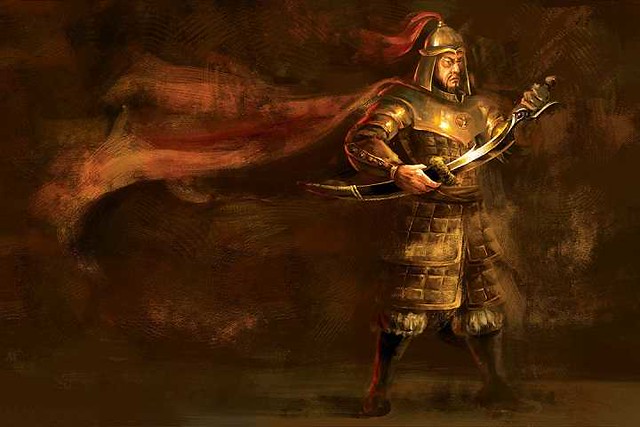 |
Cultural Affinity with Bharat?
And then there are claims that Genghis Khan refused to invade Bharat for religious reasons. Mongolia’s ancient polytheistic belief system, which is called Tengrism21 in English, has interesting commonalities with Hindu Dharma. And Buddhism, which is another form of Hindu Dharma, has had a presence22 in Mongolia for nearly two thousand years. His grandson Kublai Khan23 would go on to adopt Buddhism as the Mongol Empire’s de-facto state religion. Most Mongols today are Buddhists.
Because of this, it is speculated that he may not have wanted to spill blood in the land that gave birth to Hindu Dharma and Buddhism. This is possible, but it’s also true that by conquering Bharat, he would have freed the land of the genocidal barbarians who had not only destroyed Buddhism in Afghanistan but were also doing their best to eradicate Hindu Dharma from the rest of Bharat.
The Key to Understanding the Conqueror and His Motivations
So how do we deduce the reasons for his decision? To do that, we must understand him as a person, and as a leader.
Now, Genghis Khan is an enigmatic personality. Despite his immense fame and reputation, we don’t really know a lot about him. He did not seek to explain his actions and decisions. He did not leave behind a memoir or account of his career, the way Julius Caesar24, Marcus Aurelius25, or Napoleon Bonaparte26 did.
What we know about him comes from two sources. The first is The Secret History of the Mongols27, which was written after his death. And the second is the accounts of the people he conquered. The accounts of his enemies.
These sources tell us about the man’s deeds, but not much about his motivations. We know what he did, but we don’t know why he did those things.
To understand why he decided against invading Bharat, we need to gain an insight into his motivations. And to do that, we must examine his life and his career, because therein lie the clues to what motivated him. Let’s do that.
 Khishigten-The Elite Special Forces of Chinggis Khan |
The Old Enemy: China
Genghis Khan was born in Mongolia, sometime around the year 1158. His birth name was Temujin. His father Yesugei28, the leader of the Borjigin tribe, was a wealthy and powerful man.
The Mongols were a nomadic people, and the Mongolia that Temujin was born in was a disunited, fragmented nation whose tribes were perpetually in conflict. This conflict was engineered by the Empire to the south of Mongolia: China.
Chinese rulers collected tribute from the Mongolian tribes and encouraged rivalries between them. Whenever the Mongols tried to unite, the Chinese launched punitive expeditions against them, either enslaving them or killing them. One of Temujin’s relatives, the Khan Ambaghai29, who attempted to create a confederation of several tribes, was captured, brought to China, and executed by crucifixion and dismemberment a few years before Temujin was born. The Chinese kept the Mongols fighting each other for centuries in this manner.
Temujin: Genghis Khan’s Early Life and Struggle
When Temujin was about 12 or 13 years old, his father was murdered by Turkic tribesmen, and his family was abandoned by his tribe and left to die in the harsh Mongolian winter. Mongolia is a vast, frigid, mostly barren land. Very little grows there, and the temperature routinely goes below 30 Celsius in winter. It is almost impossible for a family to survive alone in this environment without the support system and division of labor that a tribal group provides. Being abandoned in this manner was a death sentence.
The family did manage to survive, just barely. It was a harsh and brutal childhood. Temujin realized that although his father was a powerful and wealthy man, his wealth proved to be of no use after he died. It was casually stolen away.
He realized that power can make you wealthy, but wealth cannot buy you power. When you are powerful, wealth can buy you more power, but when you have no power, wealth cannot protect you from those who have it. Power trumps wealth every time. Timeless wisdom.
This is something he never forgot. For the rest of his life, he sought only one thing: power. He disdained wealth, using it as nothing more than a tool.
To make a long story short, he spent the best part of three decades fighting and raiding and gaining power30. He began at the very bottom, with absolutely nothing to his name. Over the years, he learned the secrets of power. He acquired a profound understanding of the levers of power and how to wield them. By the year 1206, when Temujin was in his late 40s, he had conquered every Mongol tribe and created a unified Mongol nation. They gave him the title of Chinggis Khan, which means “Universal Ruler”.
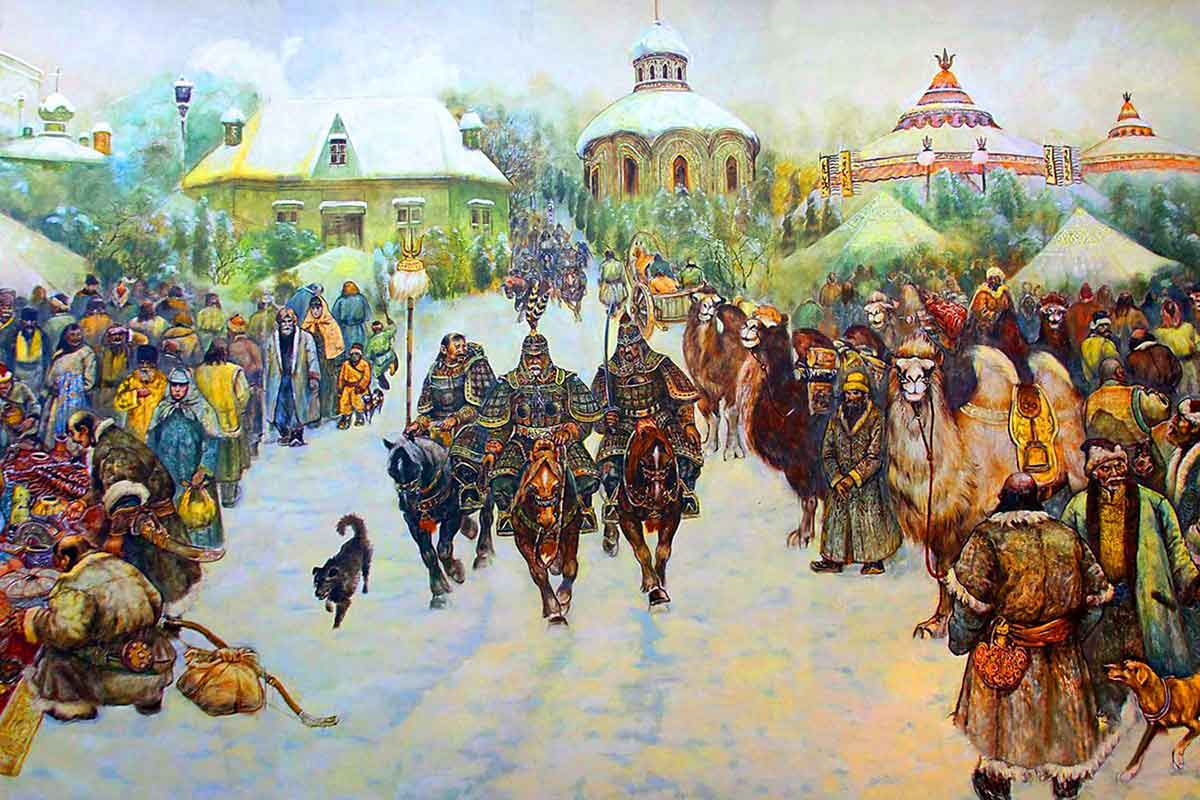 |
Genghis Khan’s Career as a Conqueror
Now, when you have a newly-created nation whose tribes have been fighting each other for centuries, it is essential to integrate them and keep them occupied, so that old divisions don’t crop up. It is essential to give them an overarching common purpose. That’s what Genghis did. He took them on an invasion of China.
This was a retaliatory invasion. Its purpose was to avenge the murder of Ambaghai and to punish the Chinese for centuries of interference and atrocities.
China was ruled at the time by two dynasties: the Western Xia dynasty31 in northern China, and the Jin dynasty32 in the east. Genghis Khan conquered the Western Xia by 1210, whose emperor agreed to submit to Mongol rule and became a Mongol vassal. He then invaded the Jin dynasty’s territories. He captured and sacked Beijing in 121533.
In 1218, the Qara Khitai Empire captured a Mongolian city and killed its king, who was Genghis Khan’s grandson-in-law. In retaliation, the Mongols invaded and conquered Qara Khitai34, which gave them a direct border with the Khwarazm Empire.
The same year, Genghis Khan sent a 500-man strong trade delegation to Khwarazm to establish official trade relations. The Shah of Khwarazm, Ala ad-Din Muhammad II35, who was Jalal ad-Din’s father, had the trade delegation massacred in the city of Otrar36. The goods were auctioned off in Bukhara.
Genghis Khan then sent three ambassadors to meet the Shah and demand the governor of Otrar37 be handed over for punishment. The Shah had one ambassador beheaded and the other two humiliated, before sending them back. This led the Khan no alternative but war. He retaliated by invading and devastating Khwarazm38.
The Shah Muhammad II escaped to a small island on the Caspian Sea, where he died. His son Jalal ad-Din became the new Shah and was pursued by Genghis Khan all the way to Bharat, where what was left of the Khwarazm army was destroyed in the Battle of the Indus, in the year 1221.
Now, when Genghis Khan went on his invasion of Khwarazm, the Western Xia emperor, who was his vassal, refused to provide troops for the invasion. This was a betrayal. In retaliation for this, after conquering Khwarazm, Genghis Khan took his armies back to China and invaded the Western Xia Empire. The territory was reconquered by 1227. He then prepared to invade the Jin Empire again, because they had also rebelled against him.
However, before he could invade Jin, Genghis Khan died, in the year 1227. The cause of his death remains a mystery. His third son Ogedei, who succeeded him as the Great Khan of the Mongol Empire, completed the conquest of the Jin Empire. His grandson Kublai Khan founded the Yuan dynasty39 in China and was this dynasty’s first emperor.
Genghis Khan’s Invasions: The Hidden Pattern
Let’s recap Genghis Khan’s career as a conqueror. He invaded the Western Xia Empire and the Jin Empire in retaliation for the murder of his relative Ambaghai and centuries of Chinese interference and atrocities. He invaded the Qara Khitai Empire in retaliation for capturing a Mongol city and killing his grandson-in-law. He invaded Khwarazm in retaliation for extremely grave provocations. He re-invaded the Western Xia in retaliation for their betrayal.
Do you see the pattern? Genghis Khan’s invasions were always retaliatory in nature. He went to war only when there were just causes for war.
He did send his sons on conquests to far-off lands so that they would each have more than enough territory40 to call their own after he died. His sons were highly ambitious and he did not want a civil war among them after his death. It would have been disastrous for his newly-unified nation. But he himself went to war only in retaliation, when his red lines were crossed.
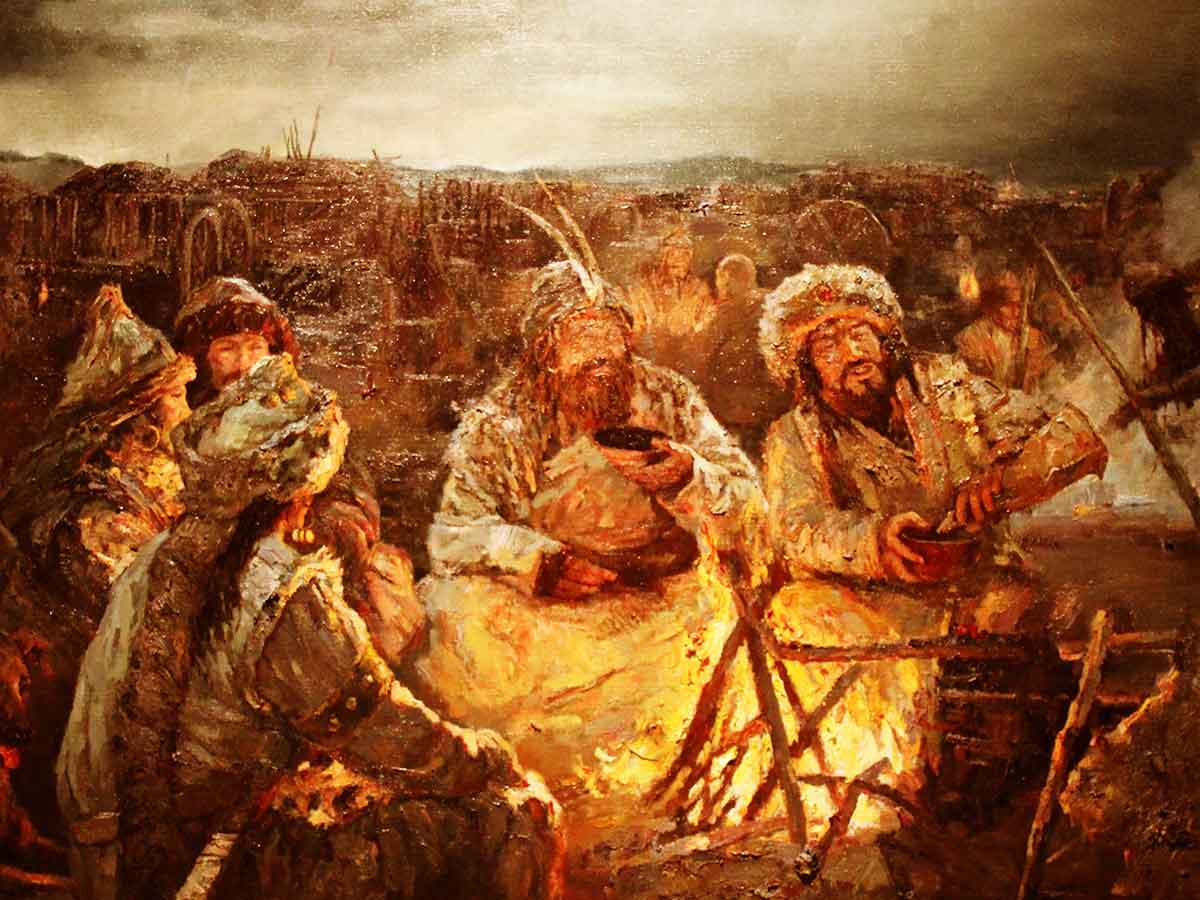 |
Genghis Khan’s reasons for not invading Bharat
The Mamluk invader Sultan Iltutmish was careful not to provoke him. When Genghis Khan invaded Punjab in pursuit of Jalal-ad-Din, Iltutmish wisely stayed away, even though Punjab was part of his territory. And even more wisely, he refused to give Jalal-ad-Din asylum in Bharat. By doing so, Iltutmish ensured that Genghis Khan had no reason to feel aggrieved with him.
But why didn’t Genghis Khan pursue and kill Jalal-ad-Din? The answer is simple: with his Empire lost and army destroyed, Jalal-ad-Din had lost everything. He had become a non-entity. He remained a Shah only in name. He would never be a real threat again. It was pointless to pursue him after his army was destroyed, especially when there was a Chinese betrayal to avenge.
But what about Bharat’s fabulous wealth? Didn’t it tempt Genghis Khan? Like I said before, he regarded wealth only as a means to an end. His armies did plunder enormous amounts of treasure during his conquests, but he personally kept none of it. He insisted that it be divided equally among his soldiers and commanders. He did earn vast amounts of wealth in the form of tribute from his tributary states, but he used that for administration and governance.
The Mongol Empire had more than enough wealth. Genghis Khan understood instinctively that too much wealth would make his people lose the hunger and the iron discipline that set them apart from all others. That was the last thing he wanted.
It’s also possible that he may not have wanted to inflict collateral damage on the Bharatiya people who were already suffering under brutal foreign rule. He knew an invasion would cause a massive number of deaths among Bharat’s civilian population, whether he liked it or not. It’s possible he didn’t want to hurt the people of Bharat, even though he was not in a position to help them.
It’s possible he felt a cultural affinity with Bharat, the kind of affinity he was unable to feel with Iran and Afghanistan. We don’t have primary evidence or testimony that proves this conclusively, but I do not rule this possibility out. If you look at Mongolian society and culture, you’ll see Bharatiya influences everywhere even today.
Summary: Man of Principles
To summarize, Genghis Khan refused to invade Bharat for the following four reasons:
- His national interest dictated that he should return to China at the earliest to deal with the Chinese betrayal. The longer he waited, the bolder would the Chinese become, and the greater would be the magnitude of their rebellion. He had already spent too much time conquering Khwarazm. Time was of the essence.
- He did not face any provocation from the Mamluk dynasty which was ruling northern Bharat.
- He did not want to pursue a man who had lost everything and was no longer a threat.
- He was not motivated by wealth. He was motivated by a desire for revenge and justice. He went to war only in retaliation. He launched invasions only when his nation was wronged.
Do you know what that is called? It’s called having principles.
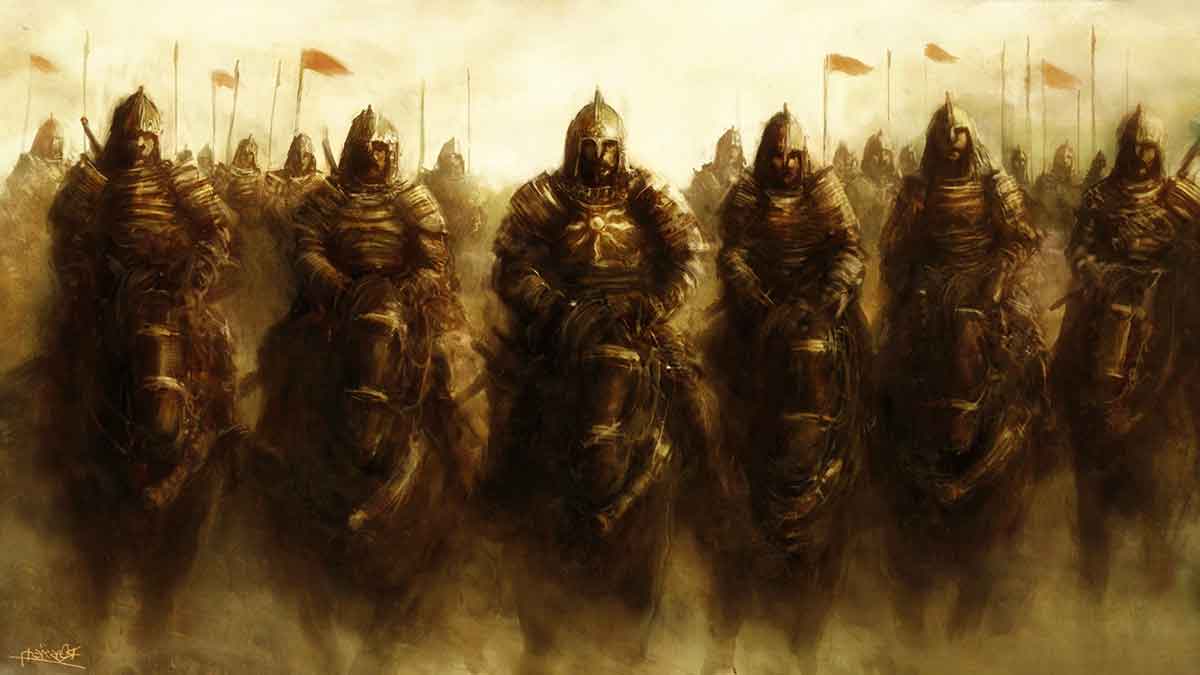 |
Genghis Khan: A Misunderstood and Misportrayed Historical Figure
Genghis Khan is one of the most misunderstood and misportrayed historical figures of all time. And his misportrayal is deliberate. Western historians despise the fact that a non-European was greater than Alexander, Caesar, and Napoleon. Islamic historians loathe the fact that a polytheist non-Muslim brought the Islamic world to its knees and reduced it to utter helplessness.
They have almost universally portrayed Genghis Khan as a bloodthirsty savage and a barbaric, greedy, genocidal monster.
It’s curious that Jalal-ad-Din, on the other hand, is depicted as a towering, heroic figure even though he was a failure. He achieved nothing of significance, presided over the destruction of his Empire and the dissolution of his dynasty, and died in obscurity. Napoleon was right: “History is a set of lies agreed upon.”
The truth is that Genghis Khan was no more monstrous than Alexander, Caesar, Timur, Columbus, Aurangzeb, or Churchill. His actions in Khwarazm were no more brutal than those of William the Conqueror in 1087, when he destroyed the French city of Mantes, burned its houses and churches, and massacred its inhabitants: men, women, as well as children. He was certainly less savage than the Islamic and European colonizers of various parts of the world, and definitely less monstrous than Stalin and Mao.
The reason he is so misunderstood is that historians have adopted a simplistic, reductionist approach with him while treating Western and Islamic rulers with depth, nuance, sophistication, and deference, which is precisely the approach they take with Bharat’s history.
Genghis Khan was simply a product of his time. He found a way to survive and succeed in an exceedingly brutal and harsh world. He did not merely succeed, he excelled. He became the greatest conqueror of all time.
Maybe it’s time we understood Genghis Khan better. There’s a lot we can learn from his life and career.
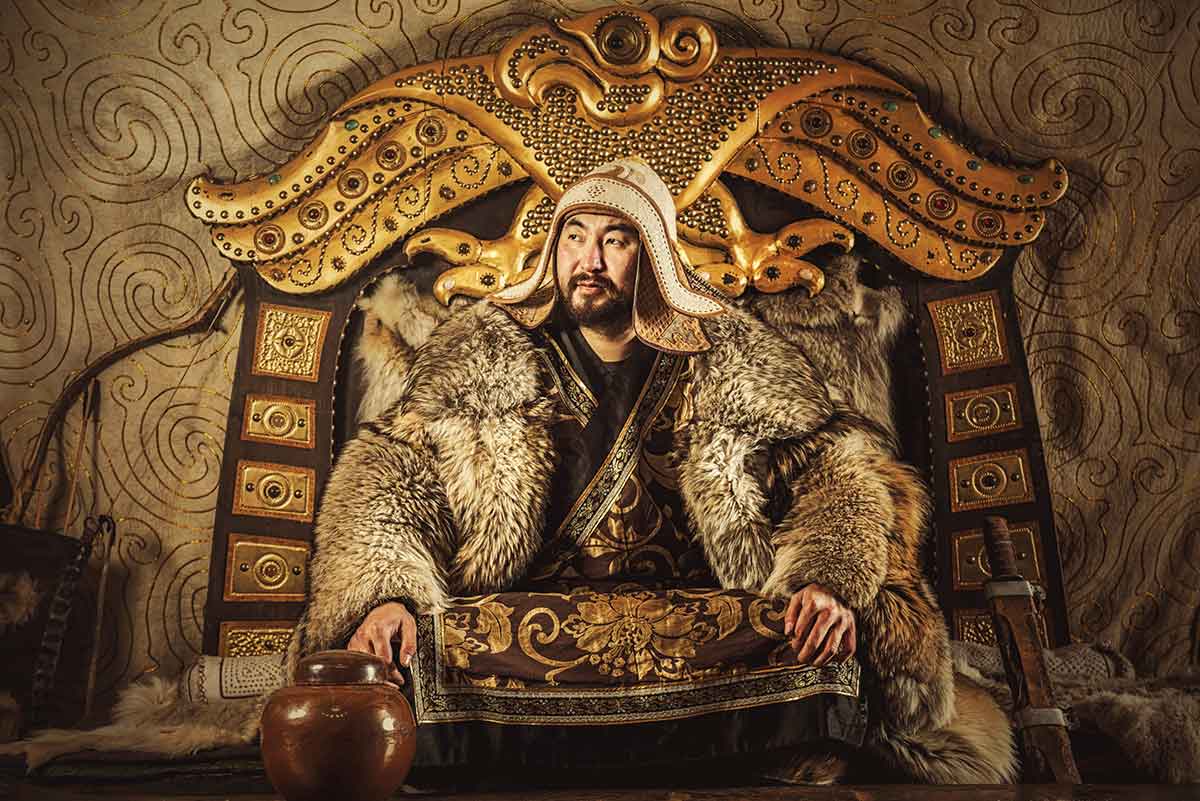 |
References
- Genghis Khan | Biography, Conquests, Achievements, & Facts. Encyclopedia Britannica britannica.com
- Jalal ad-Din Mingburnu. Wikipedia en.wikipedia.org
- Battle of the Indus. Wikipedia en.wikipedia.org
- Maddison A. Contours of the World Economy, 1-2030 AD : Essays in Macro-Economic History. Oxford ; New York : Oxford University Press; 2007 archive.org
- Iltutmish. Wikipedia en.wikipedia.org
- Mamluk dynasty (Delhi). Wikipedia en.wikipedia.org
- Mongol conquest of the Khwarazmian Empire. Wikipedia en.wikipedia.org
- Khwarazmian dynasty. Wikipedia en.wikipedia.org
- The Islamic World to 1600. The University of Calgary, The Applied History Research Group web.archive.org, ucalgary.ca
- Mamluk. Wikipedia en.wikipedia.org
- Mongol conquest of China. Wikipedia en.wikipedia.org
- Genghis Khan takes Beijing | History Today historytoday.com
- Qara Khitai. Wikipedia en.wikipedia.org
- Hazaras. Wikipedia en.wikipedia.org
- Yelü Chucai | Chinese statesman. Encyclopedia Britannica britannica.com
- Chinggis Khan versus the Unicorn | History Today historytoday.com
- Iron Gates of Sogdiana | Uzbekistan Travel uzbekistan.travel
- Minhaj-i-Siraj. Wikipedia en.wikipedia.org
- Timur | Biography, Conquests, Empire, & Facts. Encyclopedia Britannica britannica.com
- Babur | Biography & Achievements. Encyclopedia Britannica britannica.com
- Tengrism. Wikipedia en.wikipedia.org
- Buddhism in Mongolia. Wikipedia en.wikipedia.org
- Kublai Khan | Biography, Accomplishments, & Facts. Encyclopedia Britannica britannica.com
- Gaius Julius Caesar: Writings. Livius livius.org
- Meditations. Wikipedia en.wikipedia.org
- Memoirs of Napoleon Bonaparte, Complete, by Louis Antoine Fauvelet de Bourrienne gutenberg.org
- The Secret History of the Mongols. Wikipedia en.wikipedia.org
- Yesugei. Wikipedia en.wikipedia.org
- Ambaghai. Wikipedia en.wikipedia.org
- Rise of Genghis Khan. Wikipedia en.wikipedia.org
- Western Xia. Wikipedia en.wikipedia.org
- Jin dynasty (1115–1234) Wikipedia en.wikipedia.org
- Battle of Zhongdu. Wikipedia en.wikipedia.org
- Mongol conquest of the Qara Khitai. Wikipedia en.wikipedia.org
- Muhammad II of Khwarazm. Wikipedia en.wikipedia.org
- Otrar. Wikipedia en.wikipedia.org
- Inalchuq. Wikipedia en.wikipedia.org
- Mongol conquest of the Khwarazmian Empire. Wikipedia en.wikipedia.org
- Yuan dynasty. Wikipedia en.wikipedia.org
- Mongolia – The successor states of the Mongol empire. Encyclopedia Britannica britannica.com
- hindupost.in - by Abhijit Chavda
 Support Us
Support Us
Satyagraha was born from the heart of our land, with an undying aim to unveil the true essence of Bharat. It seeks to illuminate the hidden tales of our valiant freedom fighters and the rich chronicles that haven't yet sung their complete melody in the mainstream.
While platforms like NDTV and 'The Wire' effortlessly garner funds under the banner of safeguarding democracy, we at Satyagraha walk a different path. Our strength and resonance come from you. In this journey to weave a stronger Bharat, every little contribution amplifies our voice. Let's come together, contribute as you can, and champion the true spirit of our nation.
 |  |  |
| ICICI Bank of Satyaagrah | Razorpay Bank of Satyaagrah | PayPal Bank of Satyaagrah - For International Payments |
If all above doesn't work, then try the LINK below:
Please share the article on other platforms
DISCLAIMER: The author is solely responsible for the views expressed in this article. The author carries the responsibility for citing and/or licensing of images utilized within the text. The website also frequently uses non-commercial images for representational purposes only in line with the article. We are not responsible for the authenticity of such images. If some images have a copyright issue, we request the person/entity to contact us at satyaagrahindia@gmail.com and we will take the necessary actions to resolve the issue.
Related Articles
- To be on the wrong side of history is a choice – How 21st-century invaders are capturing Chhatrapati Shivaji’s forts the way even Mughals didn’t and attempting to reclaim an invader identity unapologetically
- ‘Liberal’ elites has issue with Hindu identity of PM Modi and emphasize "Aakhir Albert Pinto Ko Darr Kyun Lagta Hai" – Deciphering the latest rants of Naseeruddin Shah
- Darul Uloom answers modern questions: Mobile recharging and talking on phone is halal, but taking photos and Job in Paytm is haram and Angels need Identity cards to enter a house
- Hero of Pawankhind: Veer Maratha Bajiprabhu Deshpande, who led 300 Soldiers against 12000 Adilshahi Army defending Shivaji
- Hitler’s propaganda minister Joseph Goebbels said 'Repeat a lie often enough and it becomes the truth' - Whitewashing a genocide – how the exodus of Kashmiri Pandits is being blamed on Hindus instead of on Islamists
- How Chhatrapati Shivaji Maharaj was establishing Hindu Samrajya by concluding centuries of Islamic oppression - Historian GB Mehandale destroys secular propaganda against Hindu Samrajya Divas
- If only India’s partition chilling wound was not enough, Gandhi did his last protest again only to blackmail India into giving 55 crores to Pakistan, dragged Hindu, Sikh refugees seeking shelter in mosques to die in cold: And we call him Mahatma, not for
- Islamic revivalist movements in Bharat and Deoband’s link to Taliban
- Congress-Left corporal commination, BJP’s moment of convenience: Mainstreaming the ‘Nationalist Muslim’ with the reinstallation of Hindutva
- Mohammedan needs to 'take back Babri Masjid', ISIS magazine states that Hindus are ‘filthy urine drinkers’ who learned civilized living from Muslims
- Islamists are raging Land Jihad by encroaching iconic Maharashtra forts through illegal constructions within the premises, falsifying history by inventing fictional characters
- Devkinandan Thakur's statement is a slap in the face of the Islamist hoodlum from Hyderabad - “Many more Yogis and Modis standing in line…”
- Arabic Teacher Shoeb Akhtar of Darul-Uloom was sodomizing a 10-year-old boy for ten days inside madarsa, arrested: Victim’s family had enrolled him after returning from South Africa two months back
- 23 Jan to 29 Jan - 2022 - Hindus under attack: Bulletin roundup of persecution, discrimination, and hate crimes against Hindus
- Result of collective myopia or paralysing hope is that we fail to see the patterns of Islamic aggression that have repeated themselves since time immemorial: Unfolding Khilafat 2.0 posters in 2019 to 2022 attacks on Ram Navami processions

